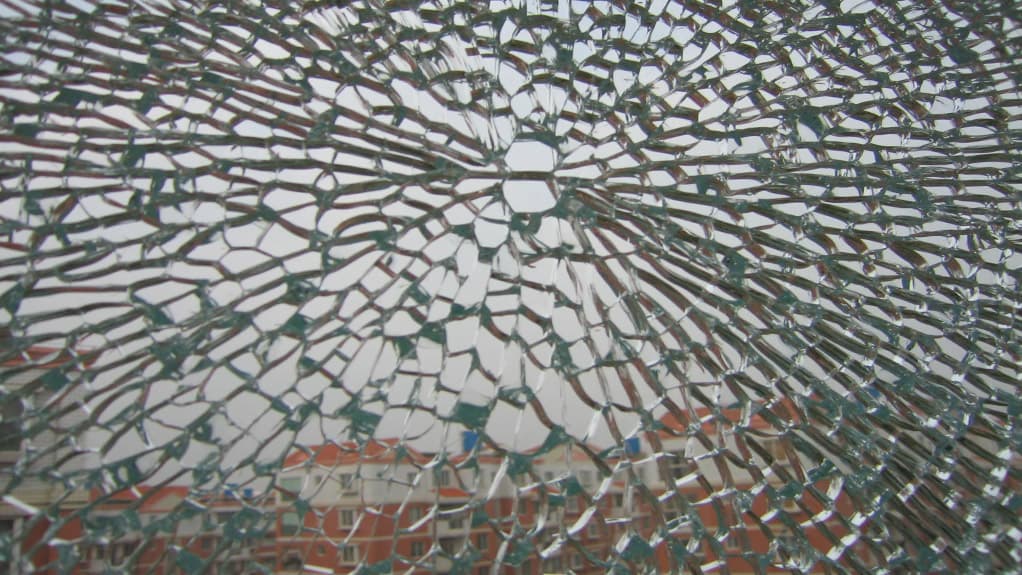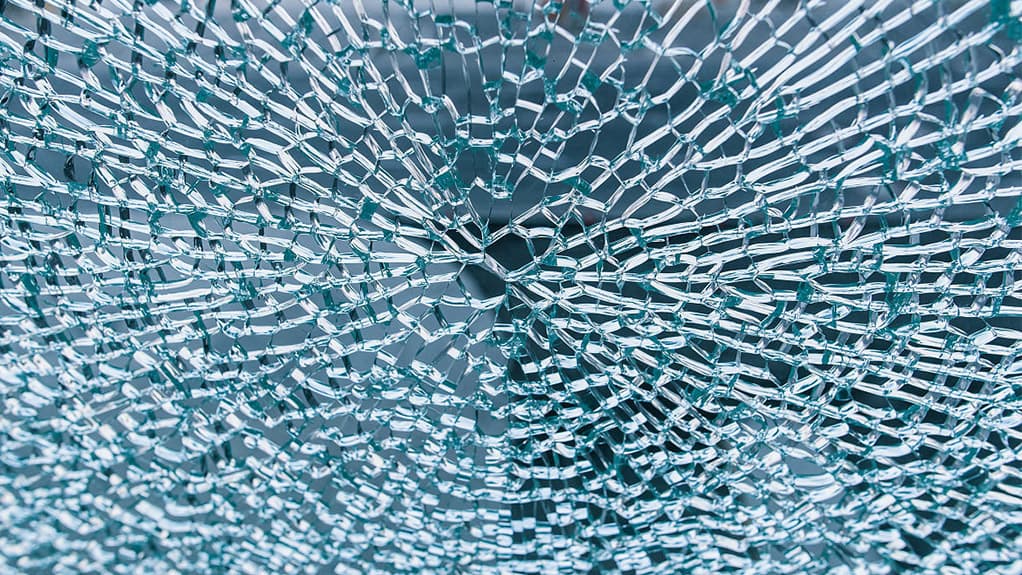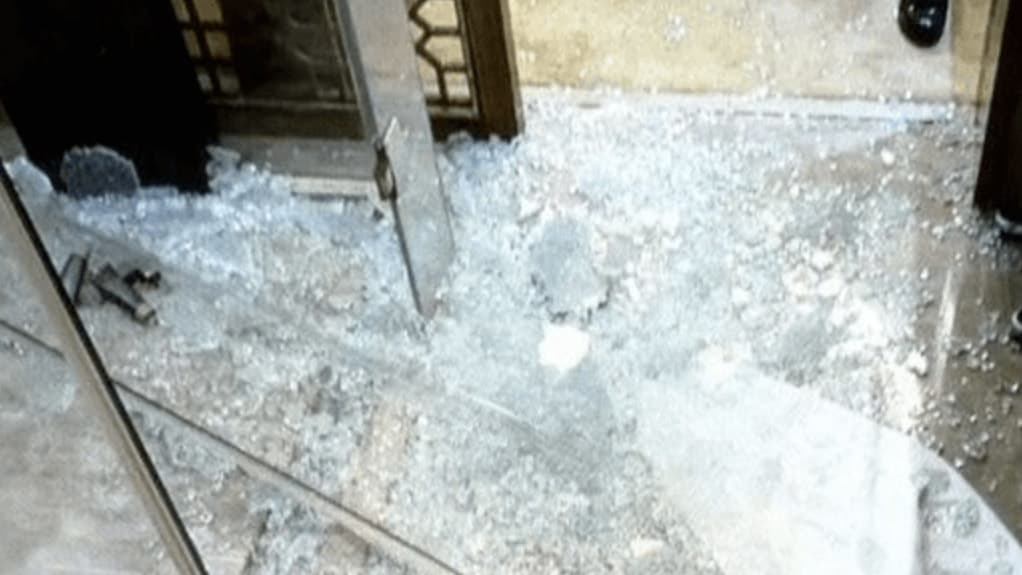Glass Cracks Comparison Table
| Type of Crack | Description | Common Causes | Effect on Glass |
|---|---|---|---|
| Corner Cracks | Originate from the edge or corner of a glass pane, extending inward diagonally from the origin point. | Impact or blunt force trauma to the corner of the glass, excessive wind pressure, or shifting foundations. | Start small but tend to spiderweb and spread inward if left untreated, compromising the structural integrity of the glass. |
| Edge Cracks | Run parallel to the outer edges of a glass pane, forming along the sides rather than originating from a corner. | Forceful impact on the edge, such as banging the rim against a hard surface or overtightening fittings, and faulty installation that puts excessive pressure on the glass edges. | Reduce the strength of the glass and can spread across the pane if not addressed, increasing the risk of shattering. |
| Heat Cracks | Caused by extreme temperature changes. | Rapid heating of cold glass or cooling of hot glass, pouring boiling water on cold glass, exposing glass to sudden blasts of hot air from appliances, and uneven heating from sunlight exposure. | Start tiny but branch out in jagged, unpredictable patterns, weakening the overall integrity of glass over time. |
| Impact Cracks | Caused by high-energy, forceful contact with the glass surface. | Sports balls, hurled rocks, hammer impacts, car collisions, and more. | Vary from small chips and pits to major branching cracks stemming from the point of contact. When they spread across the entire glass pane, breakage and collapse is imminent. |
| Flaw-Associated Cracks | Start from small imperfections in glass like nickel sulfide inclusions or scratches. | Stress on the glass causes these preexisting flaws to expand into major cracks. | The movement of trapped gases or the concentration of stress in scratches can gradually lengthen minor cracks stemming from the flaw site. |
| Identifying Cracks | Examining crack patterns, origins, and locations helps determine which type you’re dealing with. Very small cracks are often invisible to the naked eye. Backlighting glass makes cracks more apparent. Tapping along glass with a coin or another object produces different sounds at crack sites. | – | – |
| Preventing Cracks | Can be prevented by installing quality window films and treatments to control solar heat gain, using padded edge guards and bumpers to protect glass edges, securing glass firmly in frames/fittings to limit vibration, handling glass with care during transport, installation, and cleaning, and maintaining safe temperature changes during glass fabrication and hardening. | – | – |
| Repairing Cracks | Very minor chips and cracks can sometimes be repaired with UV-cured resin injected into the fissure. Larger more complex cracks typically cannot be repaired. The glass needs replacement to restore integrity and safety. With tempered glass, any crack means the entire pane needs replacement. | – | – |
| Living With Cracks | If you have small cosmetic glass cracks that pose no safety issues or structural risks, you may opt to just monitor them instead of immediately replacing the glass. Limit stress on the cracked glass by avoiding direct sunlight exposure, reducing vibration near the glass, and preventing extreme temperature fluctuations. | – | – |
Glass can crack for various reasons. Understanding the different types of glass cracks, what causes them, and how to identify them can help you determine the right repair or replacement strategy.
Some common types of cracks that can occur in glass include:

Corner Cracks
Corner cracks originate from the edge or corner of a glass pane. They typically extend inward diagonally from the origin point.
Corner cracks are often caused by impact or blunt force trauma to the corner of the glass. Knocking something into the corner, excessive wind pressure, or shifting foundations can create this type of crack.
Corner cracks start small but tend to spiderweb and spread inward if left untreated. The structural integrity of the glass is compromised as the cracks lengthen.
Edge Cracks
Edge cracks run parallel to the outer edges of a glass pane. They form along the sides rather than originating from a corner.
Forceful impact on the edge, such as banging the rim against a hard surface or overtightening fittings, usually causes edge cracks. Faulty installation that puts excessive pressure on the glass edges can also lead to edge cracking over time.
Like corner cracks, edge cracks reduce the strength of the glass and can spread across the pane if not addressed. Long edge cracks increase risk of shattering.
Heat Cracks
Extreme temperature changes cause heat cracks in glass. They occur when cold glass is rapidly heated or hot glass is cooled quickly.
Pouring boiling water on cold glass or exposing glass to sudden blasts of hot air from appliances can thermally shock the material, making it contract and expand rapidly to form cracks.
Sunlight exposure is another common cause of heat cracks in windows. The solar energy heats the glass unevenly, creating temperature differentials that induce cracks.
Heat cracks start tiny but branch out in jagged, unpredictable patterns. They weaken the overall integrity of glass over time.
Impact Cracks
Impact cracks are caused by high-energy, forceful contact with the glass surface. They can occur from things like sports balls, hurled rocks, hammer impacts, car collisions, and more.
The amount of force and angle of impact affects the severity and shape of impact cracks. They often have a punctate center point and radiate outward.
Impact cracks vary from small chips and pits to major branching cracks stemming from the point of contact. When they spread across the entire glass pane, breakage and collapse is imminent.
Flaw-Associated Cracks
Small imperfections in glass like nickel sulfide inclusions or scratches can act as starting points for flaw-associated cracks. Stress on the glass causes these preexisting flaws to expand into major cracks.
Inclusions are tiny bubbles of trapped gases that expand and contract during temperature changes. Their movement can gradually lengthen minor cracks stemming from the inclusion site.
Deep enough scratches also make glass more prone to cracking when placed under duress. The scratches concentrate stress and become the crack origin point.
Identifying Cracks
Examining crack patterns, origins, and locations helps determine which type you’re dealing with. But microscopic analysis is sometimes needed for confirmation.
Very small cracks are often invisible to the naked eye. Backlighting glass makes cracks more apparent. You may need magnification tools to inspect tiny cracks.
Tapping along glass with a coin or another object produces different sounds at crack sites. This acoustic technique can pinpoint very fine cracks.
For safety, have cracked glass assessed by a professional. Never operate damaged glass doors, windows, or furnishings.

Preventing Cracks
You can help prevent some glass cracks by:
- Installing quality window films and treatments to control solar heat gain
- Using padded edge guards and bumpers to protect glass edges
- Securing glass firmly in frames/fittings to limit vibration
- Handling glass with care during transport, installation, and cleaning
- Maintaining safe temperature changes during glass fabrication and hardening
But even with precautions, glass can spontaneously crack from factors like imperfections and dynamic stress. Talk to a glass specialist about crack-resistant options.
Repairing Cracks
Very minor chips and cracks can sometimes be repaired with UV-cured resin injected into the fissure. The resin bonds the glass edges together firmly.
Larger more complex cracks typically cannot be repaired. The glass needs replacement to restore integrity and safety.
With tempered glass, like in doors and some windows, any crack means the entire pane needs replacement. Heat strengthening makes tempered glass shatter into tiny pieces for safety when it fails.
Consult an experienced glass contractor regarding any crack repairs. DIY fixes are typically temporary or risky. Get cracked insulated and laminated glass replaced professionally.
Living With Cracks
If you have small cosmetic glass cracks that pose no safety issues or structural risks, you may opt to just monitor them instead of immediately replacing the glass.
Limit stress on the cracked glass by avoiding direct sunlight exposure, reducing vibration near the glass, and preventing extreme temperature fluctuations.
Check on existing cracks periodically to watch for expansion and new offshoot cracks. Look for any leakage or accumulation of moisture and grime, which can accelerate cracking.
Be prepared to replace the glass if the cracks begin to spread wider or longer over time. For now, minor stable cracks may not warrant glass replacement if carefully managed.

FAQs
1. What are some common causes of glass cracks?
Common causes of glass cracks include blunt force trauma, extreme temperature changes, high wind pressure, faulty installation, scratches and imperfections in the glass, and general wear and tear over time.
2. How can you tell if a glass crack is spreading?
Indicators that a glass crack is spreading include offshoot cracks forming from the original, existing cracks lengthening or widening, appearance of moisture or grime deposits along the cracks, increased visibility of crack lines, and louder sounds when tapping near cracks.
3. Is it safe to leave small glass cracks alone?
As long as the cracks are minor and are not compromising the surrounding glass integrity or posing any safety risks, it is generally fine to leave small stable cracks alone and monitor them periodically. But cracks that are spreading or cracked glass that is subjected to continued stress factors should be replaced.
4. Can cracked tempered glass be repaired?
No, any cracks or chips in tempered glass require full replacement of the pane. The heat strengthening process makes tempered glass unable to withstand imperfections. Repair materials cannot bond tempered glass together once it is cracked.
5. What’s the best way to prevent glass cracking?
To help prevent glass cracking, have quality glass installed correctly, use window films and treatments to control solar heat gain, avoid exposing glass to rapid temperature changes, prevent external impacts to the glass, handle glass carefully, and address any minor chips or scratches in the glass promptly before they can spread.
